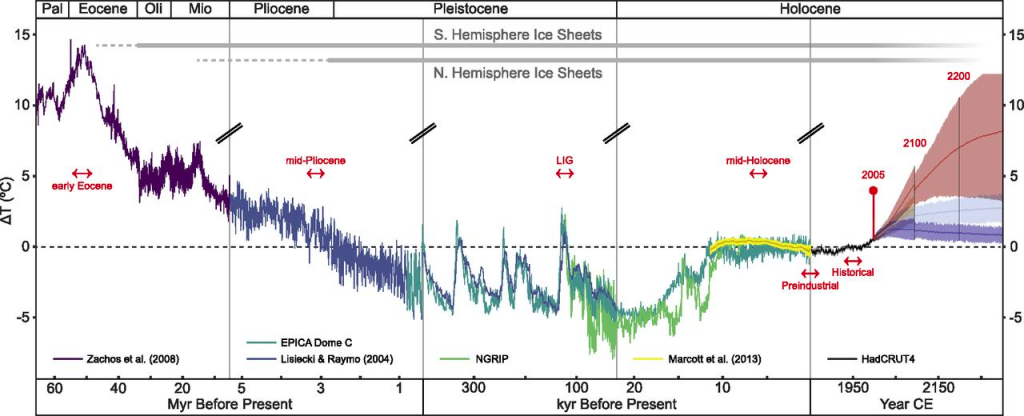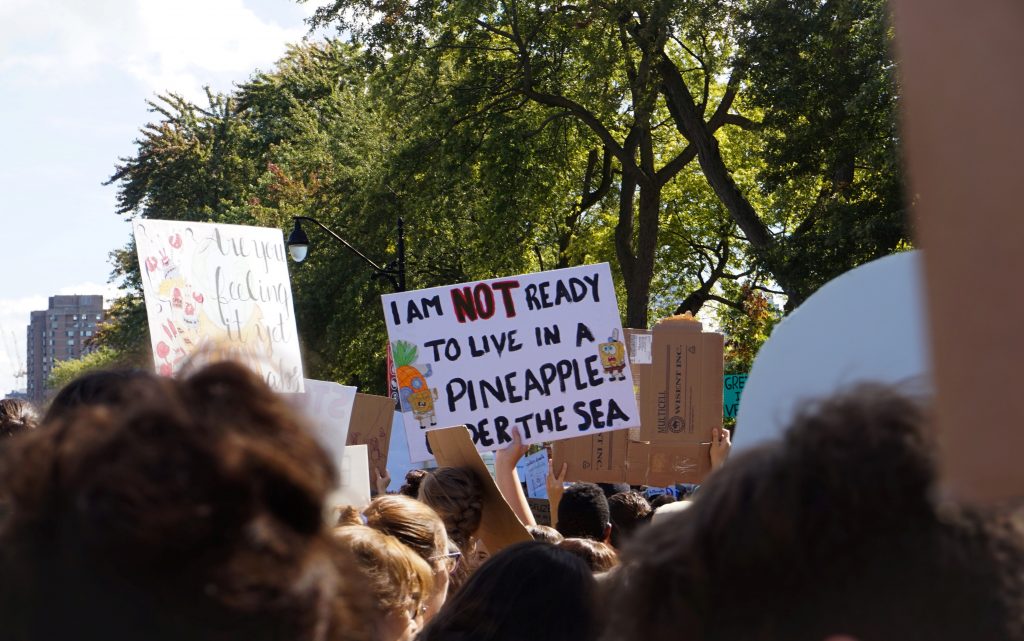Reimagining a just society pt. 4: New maps for a world disrupted by climate change

Last month, NASA’s Perseverance Rover landed on Mars to chart its environment and search for signs of ancient microbial life. It sent back thousands of images and was soon preparing to move out on “the unpaved road ahead,” according to NASA. How does the Rover know where to go? It turns out that the Rover is steering itself on the basis of onboard maps that enable it to know exactly where it is and to avoid hazards. Because Mars is so far away — some 130 million miles at the time of the vehicle’s landing — radio signals take too long to travel from Earth to Mars. Therefore, Perseverance’s travel couldn’t be managed manually by NASA. But Perseverance’s movements are based on the most precise terrain maps of Mars ever created, thanks to the work of the US Geological Survey’s (USGS) Astrogeology Science Center. “When you’re planning to explore someplace new, it’s always a good idea to bring a map so you can avoid dangerous terrain,” explains the USGS on its webpage about Perseverance.
The advice from the USGS is even more relevant on Earth these days, where rapidly changing climatic conditions have created an unfamiliar geophysical context with alarming implications for humanity’s common future. On a radically transformed planet, different conceptual maps are necessary for understanding what today’s priorities must be. Unlike the Perseverance Rover now exploring Mars, humankind lacks the updated maps or mental models needed for traversing the uncharted geopolitical, geo-economic, and geo-environmental terrain of a climate change-disrupted Earth system. These maps, or mental models, inform the framing that policy and decision makers use to weigh their options. Limitations in our conceptual frames can drastically limit the scope of considered futures. One such needed update is of the new “terrain” in which humanity can co-exist sustainably within the natural world. In general, such “maps” are composed of assumptions held about what systems or orthodoxies best explain how the world works, such as economic ideologies, belief in the continued value of standing armies and sophisticated weapons systems, or decisions about how economic value is determined. Maps influence everything from decision makers’ priorities to the design of university curricula, and they can lead society to prefer certain pathways over others.
The science that enabled the mapping of Mars’ surface and the search there for signs of ancient life also has been sounding alarms for decades about mankind’s destructive impacts on the Earth’s biosphere. In fact, nearly everything we know today about the dangers of human-induced climate change was effectively known by 1979.
The ongoing COVID-19 pandemic can be seen as a warning of the unsuitability of current maps as guides in the new Earth-system reality. Unfortunately, humanity lacks the geopolitical equivalent of an Astrogeology Science Center to update our frameworks to address the future of human society on a radically transformed Earth. While the science behind the current climate-change situation is largely settled, and there is global agreement on the need to sharply reduce greenhouse gas emissions, there is disorientation on how to proceed. New maps would show, with the urgency they are due, the dangers of continuing “off-road” in a way that undercuts shared goals of curbing emissions and living sustainably with the natural world.
Whatever our individual beliefs, there are trail markers in this new world. The last time carbon dioxide concentrations in Earth’s atmosphere were as high as now was the Late Pliocene Era, three million years ago, according to scientists who have analyzed ice cores and ocean sediments in the coldest place on Earth. At that time, temperatures were several degrees Celsius higher and the oceans at least fifteen meters deeper than today. In recent years, moreover, the annual rate of carbon emissions due to human economic activities has been more than five times the rate of CO2 emissions during the late Pliocene era, as presented in the PBS video, “The Last Time the Globe Warmed.” Martin Siegert, co-director of the Grantham Institute at Imperial College London, said, “We’ve done in a little more than fifty years what the Earth naturally took ten thousand years to do.”

The ripple effects of a warming world are occurring so rapidly, and sometimes so silently, that crisis preparedness and response systems have trouble making sense of them in time. The Washington Post has reported, for example, that scientists, while examining soil in ice cores collected more than fifty years ago from the bottom of the Greenland ice sheet, recently discovered plant fossils beneath the mile high ice mass. Their excitement was quickly tempered by their realization that, if plants once grew on the surface of Greenland approximately one million years ago—when greenhouse gas concentrations in the atmosphere were far lower than current levels, and the Earth itself was rarely as hot as it is now—the Greenland ice sheet could collapse due to relatively small increases in temperature with dire implications for the world. As this case demonstrates, small changes can have large ripple effects that must be foreseen in order to take appropriate action to forestall them. Faulty “maps” that ignore or fail to identify these risks will cost human society precious time.
The demonstrated vulnerability of the Greenland ice sheet to climate change is just one indicator of the breakdown of a transformed Earth, and the web of life that enables all human economic and societal activity. In 2019, for example, a UN environmental report found that around one million species are at risk of extinction, many within decades, and more than ever before in human history. The report identifies the main drivers of biodiversity loss, in descending order of importance: (1) changes in land and sea use; (2) direct exploitation of organisms; (3) climate change; (4) pollution; and (5) invasive alien species. In addition, the “uncontrolled encroachment of humans into new habitats” has been tied to the increasing risk of zoonotic events involving disease transmission from animal species to humans, according to the Lancet COVID-19 Commission Statement on the occasion of the seventy-fifth session of the UN General Assembly. A mere 23 percent of terrestrial ecosystems remain intact.
The triple crises of biodiversity loss, climate change, and the increasing risks of emerging pandemic diseases are all interrelated, as a recent article, “An Urgent Call for a New Relationship with Nature,” in the Scientific American noted. They stem from human activity that, in the article, United Nations Secretary -General António Guterres equated to “waging war on nature.” Guterres warns, “This is suicidal. Nature always strikes back — and it is already doing so with growing force and fury.”
The period from 1945 to the present is sometimes known as the “Great Acceleration,” when global institutions created in the aftermath of World War II largely succeeded in spreading, globally, fossil fuel-based improvements to economic productivity, health, and material prosperity. Paradoxically the period is also increasingly recognized as a dangerous experiment affecting the future of civilization. As emphasized in previous posts in this series, the COVID-19 crisis has provided a global “dashboard” indicating where existing conceptual maps rooted in the post-World War II period have failed modern society. It also reveals where they have succeeded, as in the case of unprecedentedly rapid development of safe and effective vaccines. These lessons present an opportunity to prevent a reoccurrence of disaster on this scale, or worse. The lessons will indicate needed shifts that are unlikely to be accomplished by mere policy tinkering at the edges; indeed, they point to the need for systemic transformation on a still largely unimagined scale.
A coming shift in intellectual paradigms
The cognitive shifts needed for this transformation require rethinking our concepts of security across economic, health, ecological, and even national and international security arenas. Broader thinking about security ramifications would include such concerns but also would embrace a whole-of-society approach centered on the root causes of the global climate crisis.
Rediscovering the reciprocal connections between human and non-human life, and between society and nature, is necessary for new thinking. It will require overcoming an intellectual tradition that, at least in Western society, viewed the natural world as an outside “other”—separate, passive, and inexhaustible, existing for no other purpose than economic benefit. Overcoming this tradition requires learning from those who see the world and humankind’s place in it as an interdependent ecosystem. It also would benefit from openness to projects and people proposing new intellectual frameworks better matched to emerging realities. Recent examples include Bruno Latour’s Down to Earth: Politics in the New Climatic Regime and John A. Dryzek and Jonathan Pickering’s The Politics of the Anthropocene.
Latour notes, for example, “We must face up to what is literally a problem of dimension, scale, and lodging: the planet is much too narrow and limited for the globe of globalization; at the same time it is too big, infinitely too large, too active, too complex, to remain within the narrow and limited borders of any locality whatsoever.” Although Latour’s observations pre-dated the pandemic, its effects have underscored the need for a new model of human co-existence within the limits of the natural world. These ideas are further developed in a “thought experiment” and exhibition now underway at the ZKM (Center for Art and Media Karlsruhe) in Karlsruhe, Germany, called “Critical Zones: Observatories for Earthly Politics,” a program Latour co-developed with ZKM Director Peter Weibel. Similarly, Dryzek and Pickering note that governance in a climate change-disrupted epoch requires institutions “to embody foresight…and a recognition that what worked in the past will not necessarily work in the future. Foresight must involve a capacity to anticipate human-caused state shifts and act before the shift occurs. This is a demanding criterion. It means embodying responsiveness to early warnings of the sort that only science seems capable of providing.”
Such efforts to raise public awareness about the natural world, first and foremost, and human impacts on it, secondarily, also were the lifelong pursuit of Alexander Humboldt, born in 1769. Humboldt was a Prussian naturalist, explorer, and author of Cosmos, who sought to increase cognizance of the world as a living whole and warned that agricultural activities were causing climate changes.

Over two hundred years ago, a young Humboldt embarked on his five-year exploration of the wilds of South America, where he observed that colonial agricultural practices involving irrigation and deforestation were causing erosion and changes in soil conditions. In his diary and years later, when writing Cosmos, Humboldt extrapolated his observations to a global level. He warned, “Man can only act upon nature, and appropriate her forces to his use, by comprehending her laws.” As Andrea Wulf recounts in The Invention of Nature, Humboldt warned that humankind had the potential to destroy the environment and that the consequences could be catastrophic. His warnings proved prescient: “We humans are not just influencing the present. For the first time in the Earth’s 4.5 billion year history, a single species is increasingly dictating its future,” write Simon L. Lewis and Mark A. Maslin, professors of global change science and earth system science, respectively, in The Human Planet: How We Created the Anthropocene.
The need for new conceptual maps for the future of organized society is urgently indicated by the latest scientific findings of the United Nations’ Intergovernmental Panel on Climate Change (IPCC). In a Special Report issued in late 2018, IPCC scientists warned that by 2030 the world has to have reduced global emissions of heat-trapping gases by 45 percent to avoid still more severe emissions reductions scenarios. The report’s authors emphasized that this would “require rapid, far-reaching and unprecedented changes in all aspects of society.”

New thinking about security
The latest science motivates young people around the world today to participate in school strikes, inspired by the example of Swede Greta Thunberg since 2018, to draw attention to the urgent need for action on climate change. Movements such as Thunberg’s “Fridays for the Future,” as well as that of Extinction Rebellion, aim to accelerate governments’ efforts to mitigate the effects of climate change, but they are sometimes denounced as radical or extremist.
Such criticisms “get things precisely backwards,” according to Simon Dalby, a professor of geography and environmental studies at Wilfried Laurier University in Canada. Dalby writes that what the current generation of school children is demanding “is in fact very conservative — a chance at a decent life in broadly predictable and relatively safe circumstances guaranteed by social arrangements focused on continuity of family, state, and society.” What school children demand is simply their “future national security,” he says.
The example of the young climate activists’ movements around the world is just one of many underlining the need for novel thinking about security in the new Earth-system context. Elevating climate change as a high-level national security priority, as the new US administration has done, is a step in the right direction. There’s a need, however, to question whether the maps, or mental models, through which traditional state-centered US national and international security frameworks evolved are well suited to securing the future national security of young people today. These post-World War II institutions evolved within an internationally competitive geopolitical, fossil-fuel-based economic worldview. Traditional US national security framing raises attention to climate change as a security issue, but it also can delegitimize alternative climate security discourses and actors without experience in national security policy, as Franziskus von Lucke, a researcher in international relations at the University of Tübingen in Germany, observes in a new book, Securitisation of Climate Change and Governmentalisation of Security comparing US, German, and Mexican approaches to climate change and security.
The Anthropocene context
Mankind’s harmful impact on earth systems, essential to the web of life on which human society depends, is recognized in the concept of the “Anthropocene.” The Anthropocene term, coined by the late Nobel Laureate chemist Paul Crutzen and limnologist Eugene F. Stoermer in 2000, refers to a new phase in planetary history in which humanity has become a force of nature that is changing the dynamics and function of Earth itself. The proposed era, the Anthropocene, marks a departure from the previous geologic epoch, the Holocene, which, for about twelve thousand years, saw relative climate stability conducive to the evolution of human civilization. The Anthropocene is generally accepted to have begun in the mid-twentieth century, while others maintain it began with European colonialization of the Americas.

This Anthropocene framing clarifies the need for new “geopolitical imagination.” New security thinking would embrace the experiences and voices of a wider array of stakeholders than traditional security thinking. It would involve a shift to Earth-centered values acknowledging the interdependencies of human security with the health of natural ecosystems.
While climate change affects traditional national security concerns such as military operational readiness at home and abroad, a narrow focus on such issues can distort the range of policy questions and options that must be considered. Fortunately, the Biden Administration’s recently released Interim National Security Guidance explicitly calls for a “new and broader understanding of national security.” Such a broader understanding would usefully entail creating and sustaining globally cooperative foresight systems that link citizens more directly with Earth-system science expertise, as Dryzek and Pickering also recommend in their aforementioned work.
Collective intelligence
In the uncharted territory of the Anthropocene, a new and broader understanding of national security would prioritize global cooperation in cocreating shared awareness of changing Earth-system risks and potential responses. It would invite and elevate different ideas for problem-solving better suited to the complex, interdependent, and time-sensitive systemic challenges facing humanity in the twenty-first century. In addition, joint sponsorship of a global systemic crisis preparedness system would emphasize methods for global foresight, including through data visualizations and syntheses of the behaviors and interdependencies of manmade and Earth systems. Such a networked platform might be seen as an Earth-bound “Rover” with regularly updated maps “on board.”
Instead of a physical vehicle, the Rover would be a global network of networks with one purpose: synthesizing and rapidly sharing insights to accelerate needed climate change mitigation actions. Through easy-to-use dashboard displays, such a foresight system would foster opportunities to cocreate shared awareness of the urgency of climate change; accelerate discovery and learning across nations and disciplines, including those not related to climate change per se; highlight danger thresholds as seen in the example of the Greenland ice sheet discovery; and prompt innovations accessible by all. Through this open-access nexus of global cooperation, governments, non-government organizations, academia, and subnational communities—including marginalized and indigenous communities not typically engaged in security-related discourse—would participate. Their aim would be creating and implementing new methods of thinking about economic values, public health, societal priorities, and managing global risks. Concepts of security and priorities in science that have evolved in a nation-centric framework since the mid-twentieth century would be refocused on identifying and implementing more sustainable means of human coexistence within the Earth’s natural systems. This will require reimagining almost everything about modern life.
The COVID-19 pandemic has highlighted how structural racism, widening inequality, poor healthcare, outdated infrastructure, destroyed habitats, fragile supply chains and energy systems, threats to democracy, and social media-fueled disinformation undermine human security everywhere. As climate change impacts are similarly global, a lesson of the pandemic is that new thinking must reconsider what it means to be secure, who defines security, who benefits from security, and what it means to secure the future of organized society. Naturalist David Attenborough has called climate change “the biggest threat to security that modern humans have ever faced.” Such a global crisis requires global cooperation on an unprecedented scale. And it requires creating new concepts, frameworks, and mental models — or maps — to guide us on the unpaved road ahead.
Previous installment

The GeoTech Center champions positive paths forward that societies can pursue to ensure new technologies and data empower people, prosperity, and peace.
